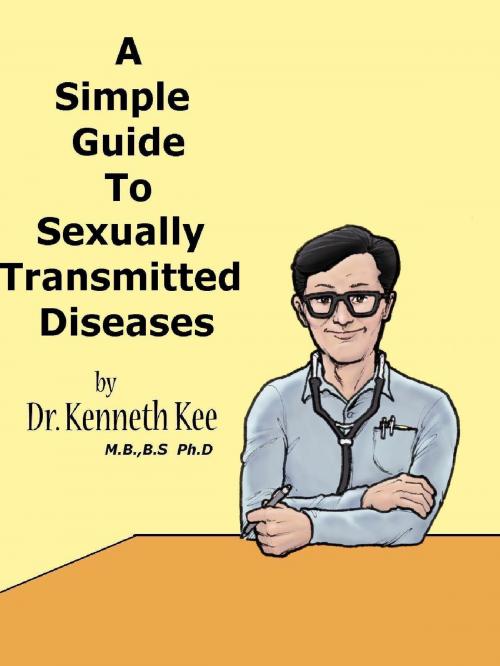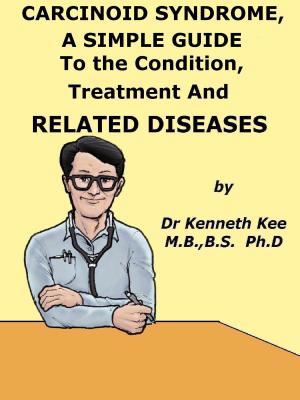| Author: | Kenneth Kee | ISBN: | 9781476131887 |
| Publisher: | Kenneth Kee | Publication: | June 18, 2012 |
| Imprint: | Smashwords Edition | Language: | English |
| Author: | Kenneth Kee |
| ISBN: | 9781476131887 |
| Publisher: | Kenneth Kee |
| Publication: | June 18, 2012 |
| Imprint: | Smashwords Edition |
| Language: | English |
Sexually transmitted diseases are transmitted through sexual intercourse with multiple partners.
It is unlikely that monogamous relationship can pass on sexually transmitted disease.
Sexually transmitted disease can
be caused by
1.bacteria such as gonorrhea , chlamydia, syphilis
2.Viral infection such as HIV,herpes, human papilloma virus
3.parasite such as trichomonas
Sexually transmitted disease is spread by infected people through contact with the penis, vagina, mouth, or anus.
Prevention of sexually transmitted diseases is by:
1.The best way to avoid transmission of
sexually transmitted diseases is to abstain
from sexual intercourse.
2.He or she should be in a long-term mutually monogamous relationship with a partner who has
been tested and is known to be uninfected.
3.Latex condoms, when used consistently and correctly, can reduce the risk of transmission of
sexually transmitted diseases.
4.Any genital symptoms such as discharge or burning sensation during urination or unusual sore or rash should be a signal to stop having
sex.
5.A person who has been diagnosed and treated for sexually transmitted diseases should notify
a ll recent sex partners so they can also be treated.
In this way there is less risk that the sexual
partners will develop serious complications from
sexually transmitted diseases.
It will also reduce the person’s risk of
becoming re-infected.
6.The person and all of his or her sex partners
must avoid sex until they have completed their
treatment for sexually transmitted diseases.
TABLE OF CONTENT
Chapter 1 Sexually Transmitted Diseases
Chapter 2 Gonorrhea
Chapter 3 Chlamydia
Chapter 4 Trichomonasis
Chapter 5 Human Papilloma Virus
Chapter 6 Human Immunodeficiency Virus
Chapter 7 Genital Herpes
Chapter 8 Syphilis
Chapter 9 Bacterial Vaginosis
Chapter 10 Candidiasis
Chapter 11 Hepatitis B virus
Chapter 12 Pelvic Inflammatory Disease
Chapter 13 Vulvitis
Chapter 14 Bartholin Cyst
Chapter 15 Cervicitis
Chapter 16 Salpingitis
Chapter 17 Urethritis
Chapter 18 Balanitis
Chapter 19 Epidymitis and Orchitis
Chapter 20 Epilogue
Sexually transmitted diseases are transmitted through sexual intercourse with multiple partners.
It is unlikely that monogamous relationship can pass on sexually transmitted disease.
Sexually transmitted disease can
be caused by
1.bacteria such as gonorrhea , chlamydia, syphilis
2.Viral infection such as HIV,herpes, human papilloma virus
3.parasite such as trichomonas
Sexually transmitted disease is spread by infected people through contact with the penis, vagina, mouth, or anus.
Prevention of sexually transmitted diseases is by:
1.The best way to avoid transmission of
sexually transmitted diseases is to abstain
from sexual intercourse.
2.He or she should be in a long-term mutually monogamous relationship with a partner who has
been tested and is known to be uninfected.
3.Latex condoms, when used consistently and correctly, can reduce the risk of transmission of
sexually transmitted diseases.
4.Any genital symptoms such as discharge or burning sensation during urination or unusual sore or rash should be a signal to stop having
sex.
5.A person who has been diagnosed and treated for sexually transmitted diseases should notify
a ll recent sex partners so they can also be treated.
In this way there is less risk that the sexual
partners will develop serious complications from
sexually transmitted diseases.
It will also reduce the person’s risk of
becoming re-infected.
6.The person and all of his or her sex partners
must avoid sex until they have completed their
treatment for sexually transmitted diseases.
TABLE OF CONTENT
Chapter 1 Sexually Transmitted Diseases
Chapter 2 Gonorrhea
Chapter 3 Chlamydia
Chapter 4 Trichomonasis
Chapter 5 Human Papilloma Virus
Chapter 6 Human Immunodeficiency Virus
Chapter 7 Genital Herpes
Chapter 8 Syphilis
Chapter 9 Bacterial Vaginosis
Chapter 10 Candidiasis
Chapter 11 Hepatitis B virus
Chapter 12 Pelvic Inflammatory Disease
Chapter 13 Vulvitis
Chapter 14 Bartholin Cyst
Chapter 15 Cervicitis
Chapter 16 Salpingitis
Chapter 17 Urethritis
Chapter 18 Balanitis
Chapter 19 Epidymitis and Orchitis
Chapter 20 Epilogue















